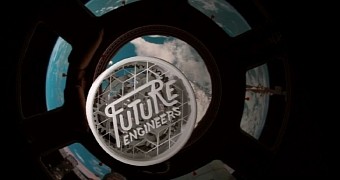You may or may not already be aware of the fact that NASA has finally sent the first space-worthy 3D printer out in, well, space. What you probably don't know is how the agency is going about providing the people up there with ideas for 3D printed tools and items.
It's one thing to decide that you'll be sending a 3D printer into space, and another thing entirely to create said 3D printer.
NASA obviously knew this, considering that it didn't even bother trying to learn the construction methods itself. Instead, it commissioned Made in Space to do it.
Now, it is taking a similar stance in regards to what the people up in orbit could actually use the 3D printer for. In fact, it is looking to young adults to help out.
The Future Engineers educational platform
While the partnership with Made in Space allowed NASA to get a 3D printer and send it to space (and have it work in microgravity), it has formed another partnership now.
Specifically, it is drawing on the knowledge and experience of the American Society of Mechanical Engineers, or ASME for short.
In a nutshell, NASA and ASME have launched the Future Engineers educational platform, whereby students can design objects that NASA could then select to send over to its astronauts on the International Space Station (ISS).
You might think it's not such a big deal to warrant a country/world-spanning initiative like this, until you realize one small fact: the lack of gravity in space has implications for the printed objects as much as for the printer itself.
The 3D printer already has what it takes to carry out its tasks in zero gravity. However, the design possibilities are expanded by the 3D printed object not needing to support its own weight.
There is no need to support platforms/auxiliary filament extrusion, for one thing. Also, objects printed in space can be made of absurdly thin sticks or threads and still stay in one piece, even though they would have collapsed under their own weight on Earth long before the print process even finished.
The students participating in the Future Engineers educational platform contest will be judged according to how well their designs exploit this element.
Prizes
For ages 5-12, the Junior Grand Prize will be a 3D printer for the kid's school. For students of ages 13-19 though, the grand prize will be a ticket (plus a ticket for a parent) to visit NASA's Payload Operations in Huntsville, Alabama, where their 3D print will be broadcast as it is printed live on the ISS.

 14 DAY TRIAL //
14 DAY TRIAL // 